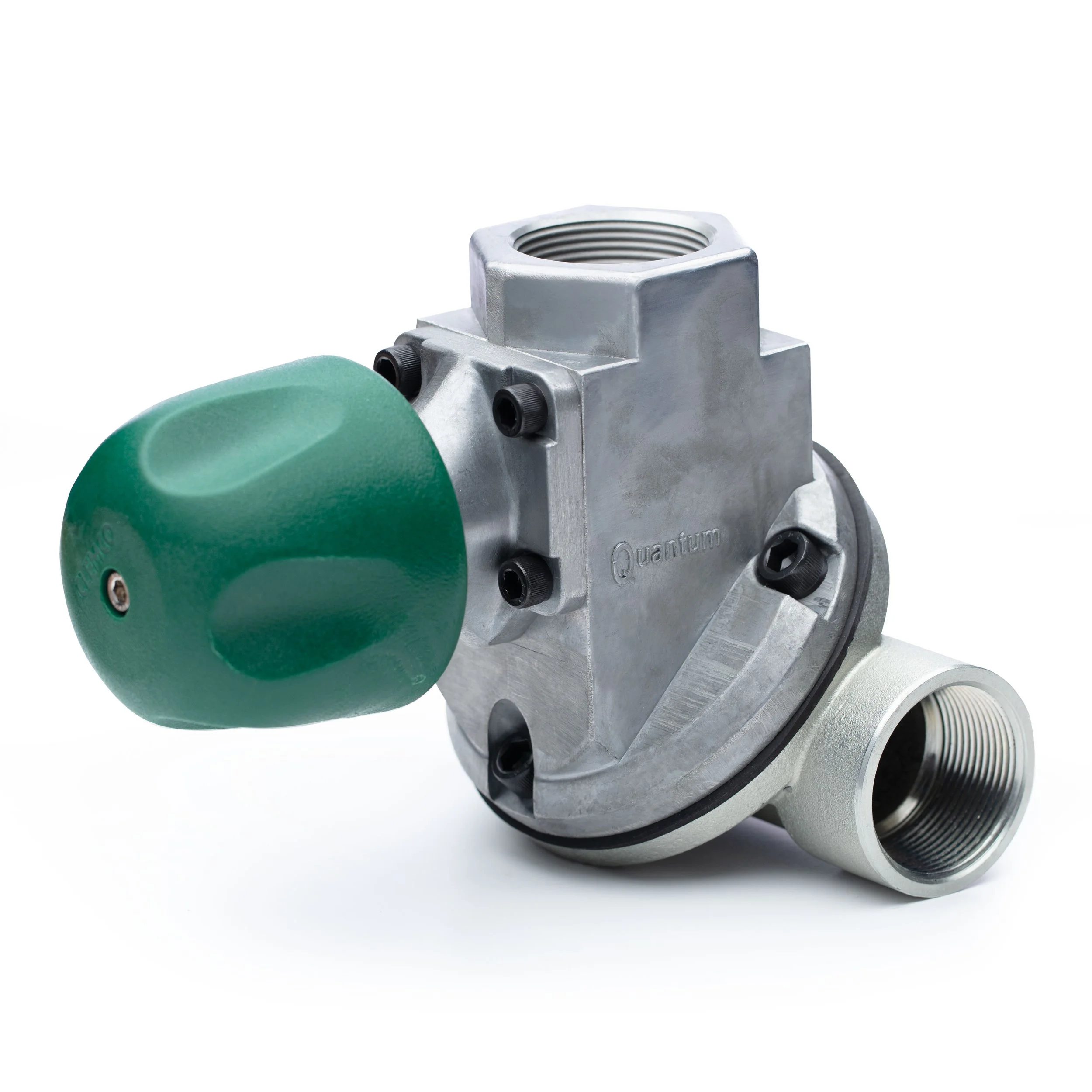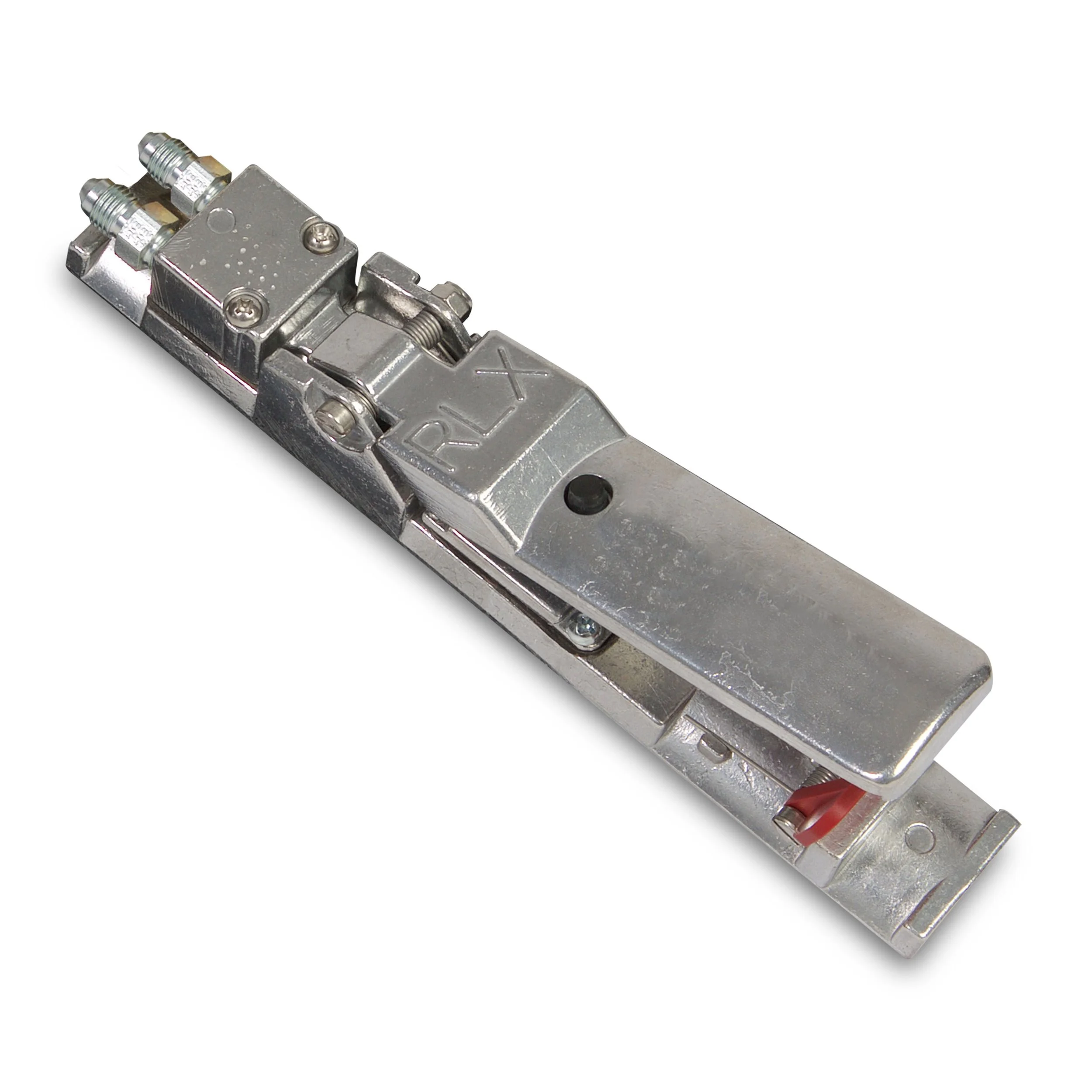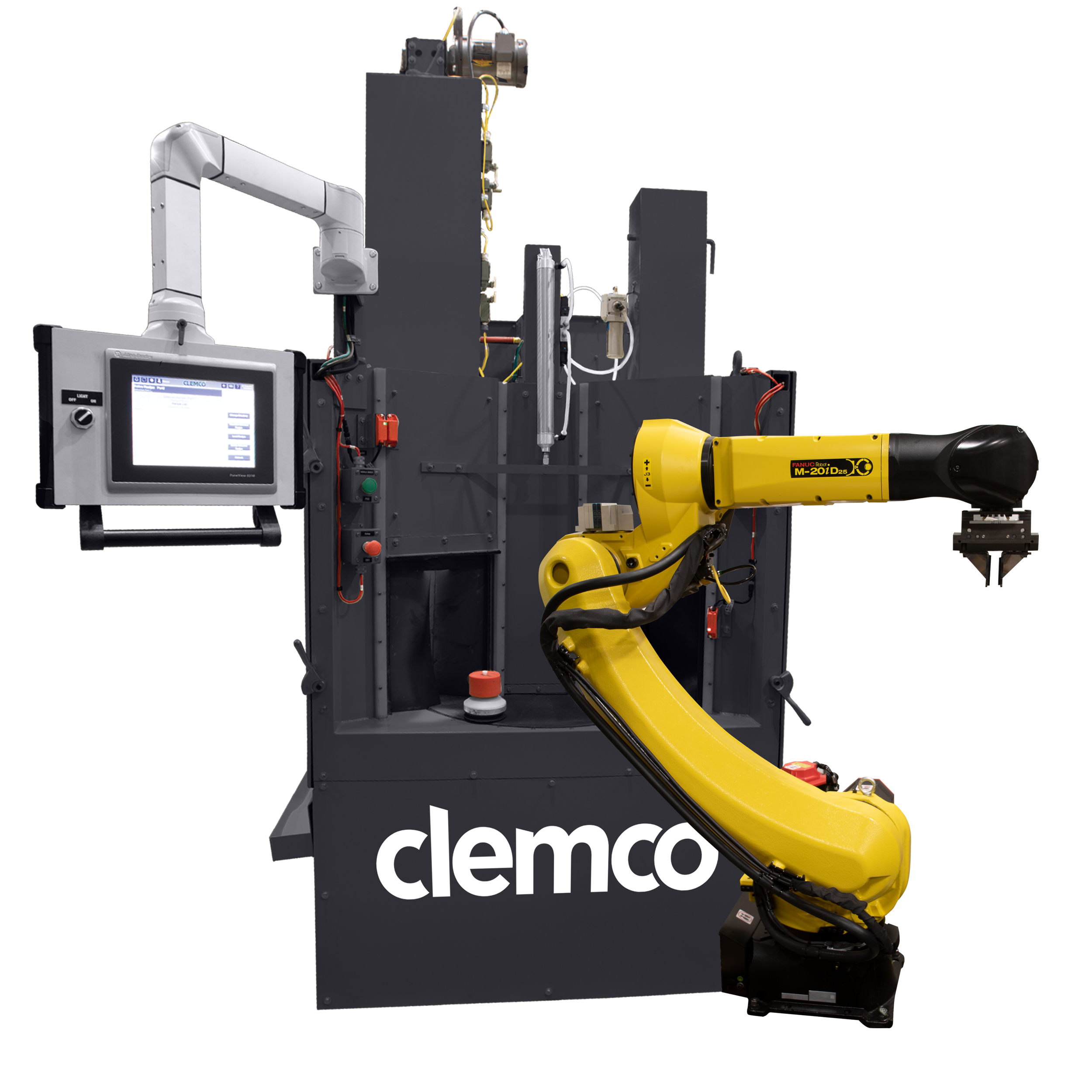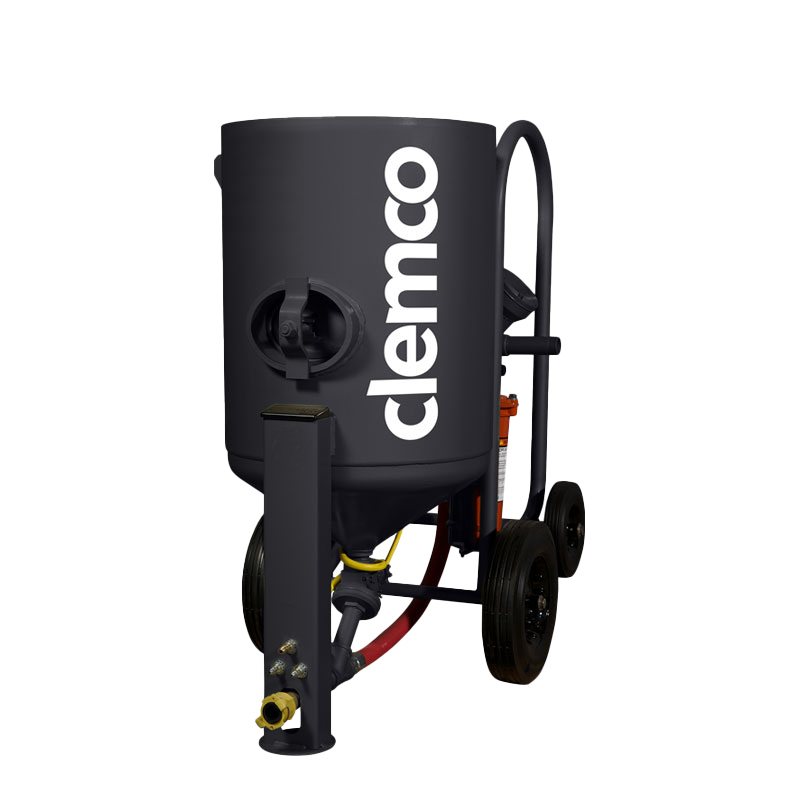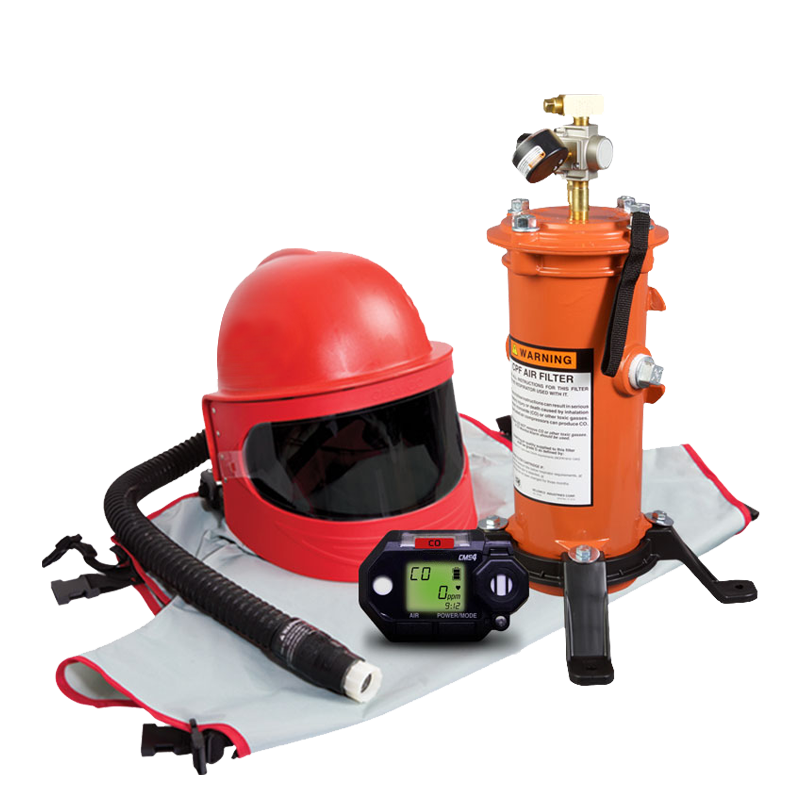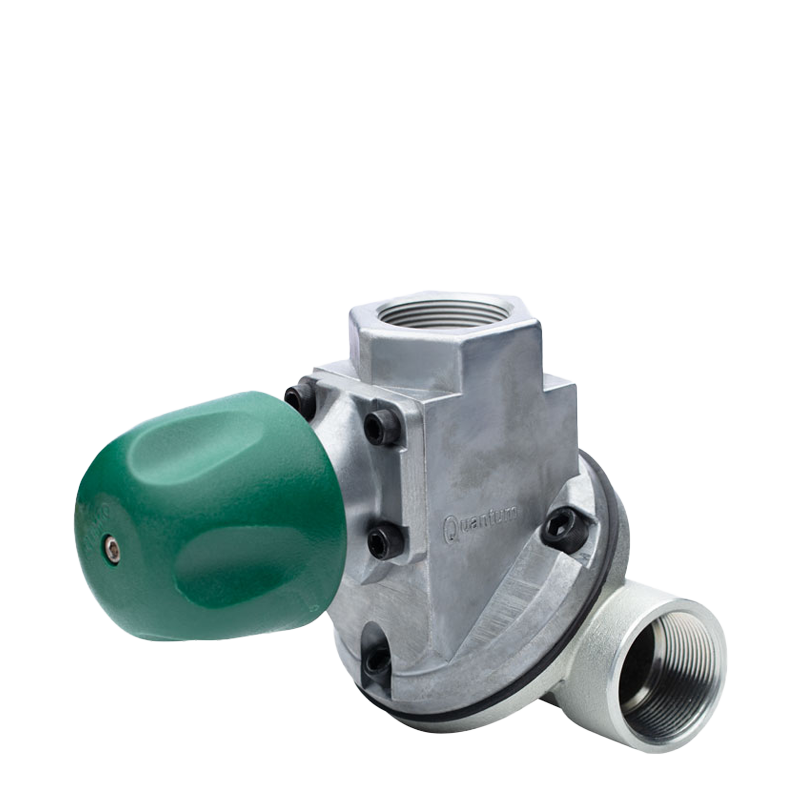
Metering Valves | Remote Controls
Pneumatic
-
Ideal for Complex Blasting Setups: Designed for pressure-release and pressure-hold systems, especially where multiple hose lengths or elevated work (like scaffolding) are involved.
Abrasive Cutoff Capability: Allows operators to stop media flow during blasting, preventing hose slugging and enabling quick clearing between uses.
Auto Quantum Valve (AQV): Compatible with all common media; used in pressure-release systems with 3-cuft and larger machines.
Sentinel Valve: Tailored for fine-mesh media, often used in pressure-release blast cabinets for precision applications.
GritWizard® Valve: Versatile for both pressure-hold and pressure-release systems; supports all common media, offers adjustable flow during operation, and features simplified maintenance with 60% fewer wear parts.
Manual
-
Designed for Long-Duration, Ground-Level Blasting: Ideal when blasting for extended periods with short blast hose runs on the ground.
MQV-Pro (Manual Quantum Valve): Compatible with all common media; fits 2-cuft and larger blast machines.
FSV & MSV (Flat and Manual Sand Valves): FSV is for larger machines using expendable mineral or slag media; MSV fits ½- and 1-cuft machines with similar media.
LPV (Lo-Pot Valve): Specially designed for 6-cuft Lo-Pot machines, its compact form fits the low-clearance configuration.
LMV (Lightweight Media Valve): Optimized for soft abrasives like soda, glass bead, and agricultural media in Soft King and Pool Pal machines.
Remote Controls
-
Operator-Controlled Blasting: Allows operators to start and stop blasting with fingertip controls near the nozzle for enhanced convenience and safety.
Fail-to-Safe Design: Automatically halts blasting if the operator drops or loses grip on the control handle, prioritizing jobsite safety.
OSHA-Compliant: Meets regulatory requirements that mandate remote control operation for all abrasive blasting machines.
Pneumatic Option: Ideal for setups with up to 100 ft of blast hose; reliable for standard temperature environments.
Electric Option: Designed for longer hose runs (over 100 ft) or cold-weather conditions, functioning effectively up to 500 ft with appropriate control cord.
Proven Performance. Rugged Reliability.
Generations of Excellence Transforming Our World, Worldwide since 1949
•
Generations of Excellence Transforming Our World, Worldwide since 1949
•
Generations of Excellence Transforming Our World, Worldwide since 1949
•
Generations of Excellence Transforming Our World, Worldwide since 1949 • Generations of Excellence Transforming Our World, Worldwide since 1949 • Generations of Excellence Transforming Our World, Worldwide since 1949 •



